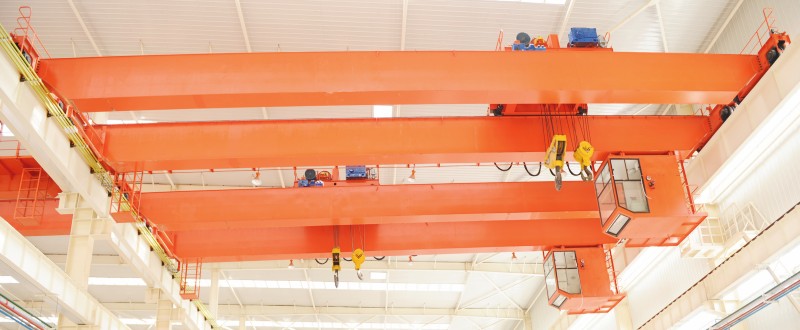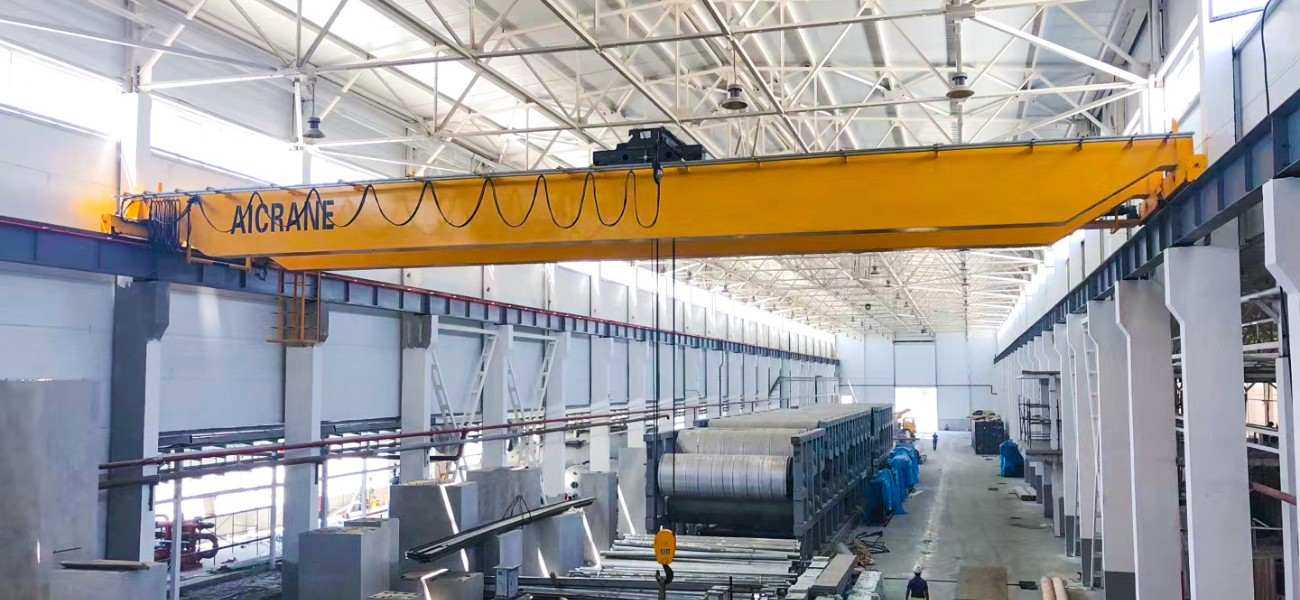Overhead cranes are critical assets for industries such as manufacturing, construction, and logistics, particularly when handling heavy loads. The 40 ton overhead crane is one of the most common models used in large-scale operations due to its ability to manage heavy lifting tasks with precision and efficiency. As industries evolve, the need to maintain and upgrade cranes to meet modern demands has become crucial. Upgrading a 40 ton overhead crane not only enhances its functionality but also extends its lifespan, improving productivity and reducing long-term operational costs.
In this article, we’ll explore some of the most effective ways to upgrade a 40 ton overhead crane, focusing on enhancing its performance, ensuring safety, and increasing its overall lifespan.

Upgrading the Hoist System for Better Performance
The hoist system is the heart of any overhead crane, responsible for lifting and lowering loads. Over time, wear and tear can reduce its efficiency, so upgrading this critical component can significantly enhance a crane’s functionality.
One of the most impactful upgrades is replacing the old hoist motor with a more efficient, energy-saving model. Newer hoist motors are designed with advanced technology that not only increases the lifting speed but also reduces power consumption, which can lead to significant cost savings in the long run.
Additionally, upgrading the hoist gear and drum can improve load handling and reduce friction. A higher-quality gear system ensures smoother and more precise lifting, reducing the strain on other crane components and extending their operational life. 40 ton bridge cranes adopt double girder crane style because of handling heavy-duty loads.
Integrating Automation and Smart Technology
The integration of automation and smart technology is transforming the way overhead cranes operate. By incorporating these advancements into a 40 ton overhead crane, operators can enjoy increased efficiency, precision, and safety.
One of the most common upgrades is installing a wireless control system, which allows crane operators to control the crane remotely. This upgrade reduces the need for manual control and improves precision when moving heavy loads in complex environments. Wireless controls also help operators avoid potentially hazardous situations, improving safety and minimizing the risk of accidents.
Additionally, adding IoT (Internet of Things) capabilities to the crane can provide real-time data on performance, usage, and maintenance needs. IoT sensors can track factors such as load weight, lifting speed, and operational hours, helping to predict maintenance needs before problems arise. This proactive approach to maintenance reduces downtime, increases productivity, and extends the life of the crane.

Enhanced Safety Features
Safety is a paramount concern when operating a 40 ton heavy duty overhead crane. Upgrading safety features is not only a way to comply with modern standards but also an investment in the well-being of workers and the overall operation.
Upgrading to modern safety systems such as overload protection can prevent accidents caused by excessive load weights. This system automatically detects when a load exceeds the crane’s capacity and triggers an alert to stop the operation before damage or accidents occur.
Installing anti-collision systems is another critical safety upgrade. These systems prevent the crane from colliding with structures, other cranes, or personnel in its path, reducing the risk of accidents. In large industrial environments where multiple cranes are in operation, anti-collision systems are crucial for maintaining a safe work area.
Additionally, upgrading crane cab controls to feature ergonomic designs can improve operator comfort, reducing operator fatigue and the risk of human error. Enhanced visibility and intuitive control panels also improve safety by making crane operations easier to manage.
Improving Crane Structure and Components
Upgrading the physical structure of the crane can enhance its durability and ensure that it continues to operate efficiently under heavy loads. One of the most common structural upgrades involves reinforcing the crane’s frame and beams, ensuring they can handle more substantial loads and heavier operational demands.
Replacing old cables with high-strength, durable steel cables or synthetic cables can improve lifting capacity and reduce wear on the crane’s components. Modern cables are designed to withstand harsh environments and reduce the frequency of replacements, which saves costs in the long run.
Additionally, inspecting and upgrading the crane’s wheels and bearings is essential for ensuring smooth movement and preventing unnecessary strain on the structure. Proper wheel alignment and regular lubrication of moving parts help reduce friction and extend the lifespan of the crane.
Regular Maintenance and Lubrication
While not technically an upgrade, regular maintenance is a key factor in extending the lifespan and functionality of a 40 ton overhead crane. Regularly servicing the crane and upgrading worn-out components ensures that the crane operates at peak performance for many years.
Implementing a preventive maintenance schedule, where parts such as hoists, brakes, gears, and cables are regularly inspected and replaced when necessary, helps avoid costly repairs down the line. Proper lubrication of moving components is also essential for reducing wear and tear, preventing corrosion, and ensuring smooth operation. To get a reliable 40ton crane, it is important to choose a reputable overhead crane manufacturer offering quality product and reliable services.
Upgrading the Crane’s Power Supply System
An often-overlooked upgrade is improving the crane’s power supply system. A stable and efficient power system ensures consistent performance and reduces the likelihood of electrical issues that could halt crane operations. Upgrading the crane’s transformer or switching to a more energy-efficient power system can significantly enhance performance while reducing electricity consumption.
Incorporating regenerative braking technology is another effective way to improve energy efficiency. This system captures energy during braking and feeds it back into the power grid, reducing overall energy consumption and lowering operational costs.
Conclusion
Upgrading a 40 ton overhead crane is a valuable investment for any business that relies on heavy lifting. From enhancing performance and safety to improving efficiency and extending the crane’s lifespan, these upgrades pay off in the form of reduced downtime, lower maintenance costs, and better overall productivity.
Key upgrades, including hoist system improvements, automation integration, enhanced safety features, and structural reinforcements, can significantly enhance crane functionality. Investing in these upgrades will ensure that the crane continues to meet the increasing demands of modern industrial environments and operates efficiently for years to come.
By staying proactive with regular maintenance and adopting the latest technological advancements, businesses can ensure their 40 ton overhead cranes operate safely, effectively, and at peak performance, leading to a higher return on investment in the long run.
